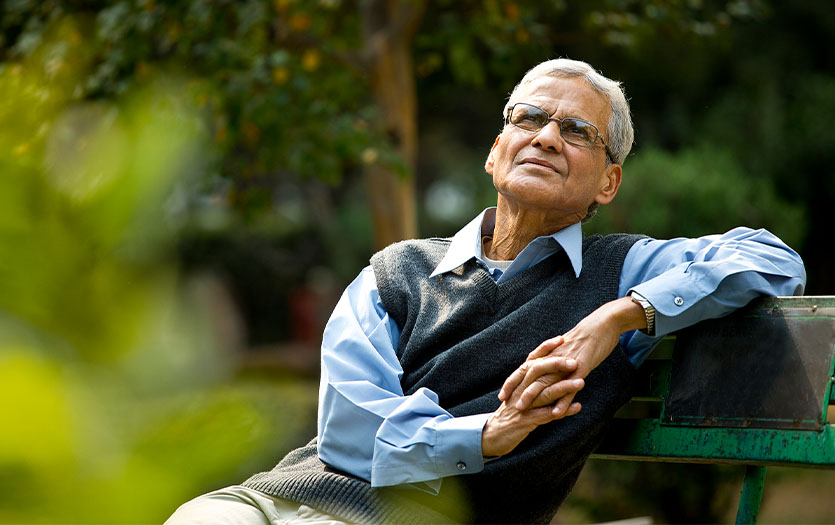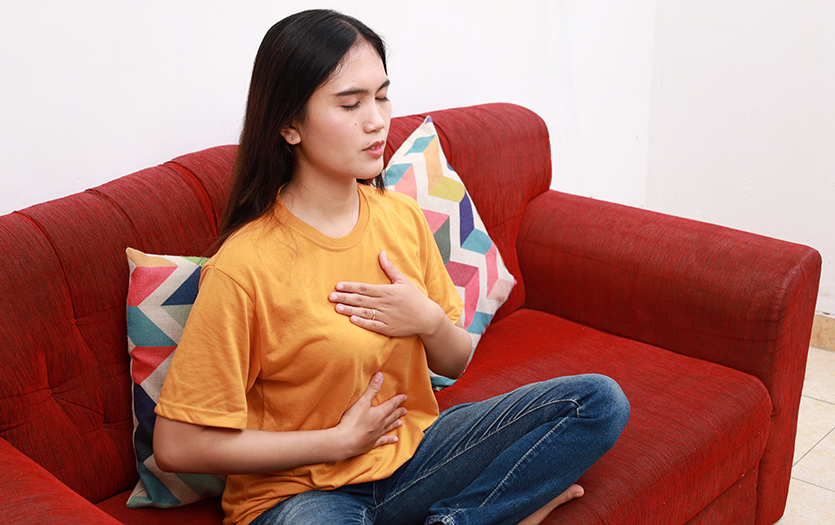
Enjoy this monthly mindfulness post from Dave Johnson, PhD, CNS- BC, LMFT, employee assistance specialist.
“It is in your hands to create a better world for all who live in it.”
Nelson Mandela
At the Parkview Center for Healthy Living, I facilitate mindfulness meditation sessions. Each month, folks who have attended in the past join new faces and hearts to come together and connect in a Mindfulness-Based Stress Reduction (MBSR) practice. Typically, we do a short reflection about mindfulness, focusing on its application for coping with stress and change. People who attend come for a multitude of reasons; to help with grief, establish healthy eating patterns, pain management, sleep regulation, anxiety, depression, autoimmune disorders or simply to be more mindful of their wellness journey. Following a review of a specific hot topic, often we sit in chairs, close our eyes, and come to an intentional slowing of breath. I lead the group through a body scan exercise or a simple noticing sensory awareness exercise.
At the conclusion of the 20-30-minute guided meditation, I have folks open their eyes but avoid eye contact with me or each other for a short time. I have them look at their hands as if they have never seen them before. I tell them to notice the skin’s color, the vessels below, the translucent skin, nail beds, hair, bumps, bruises, blemishes, etc. I encourage them to notice the temperature, and smoothness or roughness of texture. The pause is intentional, to turn on awarenessing. Our hands are so connected to our personhood and joined with us that perhaps we take them for granted unless we are injured, burned, or long for the love connected to others only found through human touch.
Pausing to look at our hands anew is one of the foundations of mindfulness, called the “beginner’s mind”. Cultivating healing within us and between us requires a bit more then following a recipe of pausing to calm one’s spirit and includes bringing an attitude change within ourselves. That pause is about non-judgment, patience, trust, non-striving, acceptance, letting go, and of course, starting anew. Beginner’s mind is looking at our world with a new set of eyes, as if we are gazing upon something for the very first time. It allows us to notice what really is versus looking over the detail and missing perhaps what is right in front of us. Intentionally, coming off autopilot thinking and feeling and seeing what is seems basic at its core, but unfortunately most of us miss the extraordinary of the ordinary.
Ordinary hands do extraordinary feats. When we reflect on our own life cycle we can imagine the compassionate and helping hands of a grandparent, mother or father, the soft and playful hands of a child or sibling, the kind and gentle hands of a nurse, doctor, teacher, counselor, confidant or friend. We can describe our work hands as strong or tender, fighting hands as tight and white knuckled, and needing hands as open and willing to grip. Newborn hands wiggle and we count their fingers, dying hands we hold and reminisce one’s life journey and say goodbye. We wave smiles of welcoming and gesture obscenities of anger. The choice in our pause may be to pull a trigger out of fear or inhale hope to a moment of uncertainty. How do we infuse our life and world with goodness and care with helping hands?
Each mindful practice session becomes a sandbox of exercising the mindful muscle to stop thinking and doing and to just be, even if just for the pause. Practicing the ending of a session by turning on beginner’s mind helps us to recall the importance of intention. And so I ponder a few questions:
- How might beginner’s mind free one from expectations from past experiences?
- Where can opening up an attitude to new possibilities and prevention of being stuck in a rut be helped with this pausing?
- Besides the practice with my hands at the end of meditation practice, where else might I cultivate remembering to come off autopilot and open my eyes to reality as it exists in front of me?
- When I greet a person perhaps I know well, how might I try a mini experiment to look at them with new eyes of wonder and see them for how they are, versus only a reflection of what I have in my memory?
- How can I explore the ordinary of home and notice what sparks delight?
- When I am triggered with fear, anger, or intensity of emotion, can I pause with beginner’s mind to wedge a breath of curiosity to be a bit of a fly on the wall with noticing?
- How might the exploration of the outdoors help me to see anew even on the paths that I have well-traveled?
And so the hands become one place for me to practice beginner’s mind over and over and over. I tend to forget to look at them in awe. At the end of life, when the edges of my hands are worn with the toil and stress and strain of living, will I fold them at my chest and be at rest? Where have I used my hands to bring goodness?
Other resources
invisibleinklings.com – Sign up for mindfulness & healing exercises from Dr. Johnson and Kathy Curtis, healing artist.
For a free 1:1 in person or phone consultation with Dr. Dave or to find out about more on Mindfulness & Stress Management programs, contact the Parkview Center for Healthy Living at (260) 672-6500. Dr. Dave also provides on-site guidance for teambuilding and transformational leadership, among other topics. To learn more about Employee Assistance Programs for your company, call Business Development at (260) 373-9013. Mindfulness-based stress reduction (MBSR) practice has been extensively researched and proven helpful for coping with stress and change, grief, healthy eating patterns, pain, anxiety, depression and many other chronic disease and autoimmune disorders.



